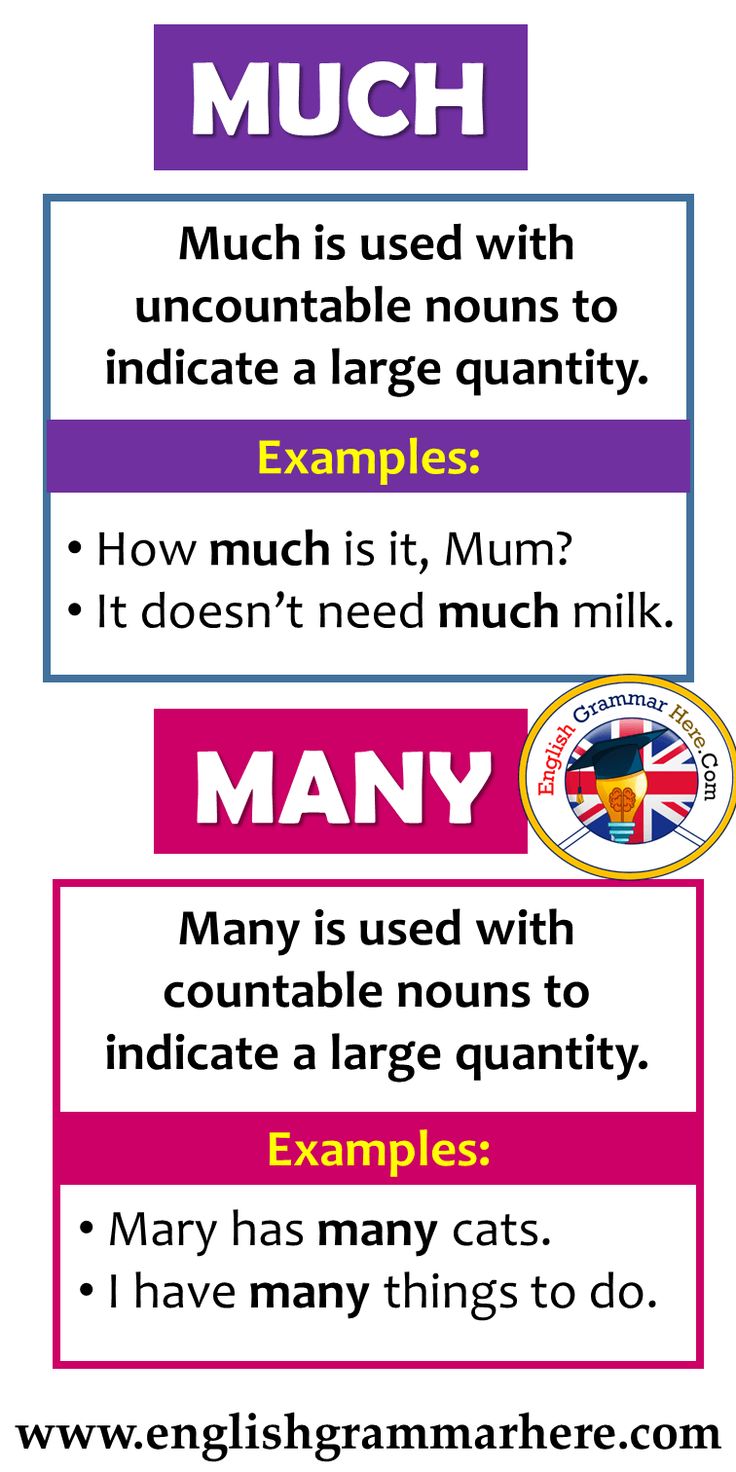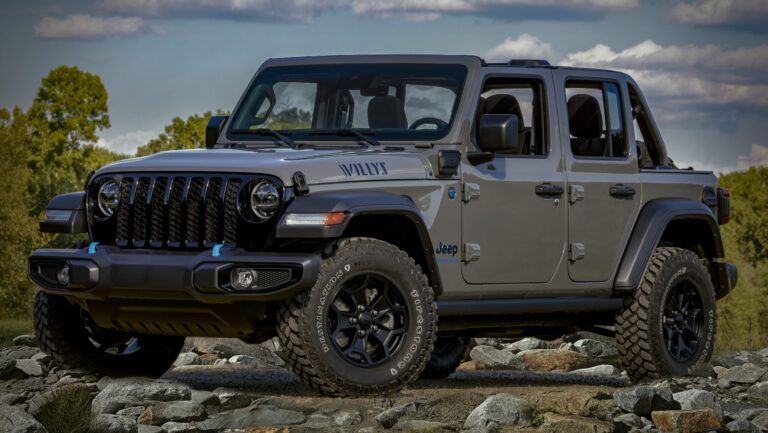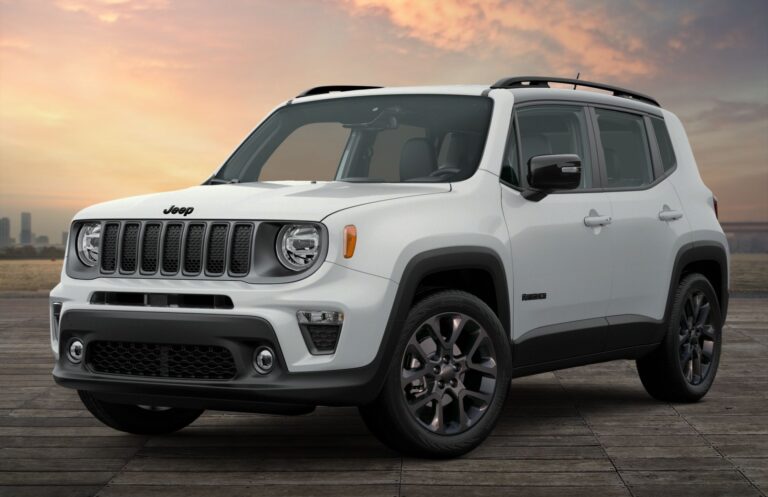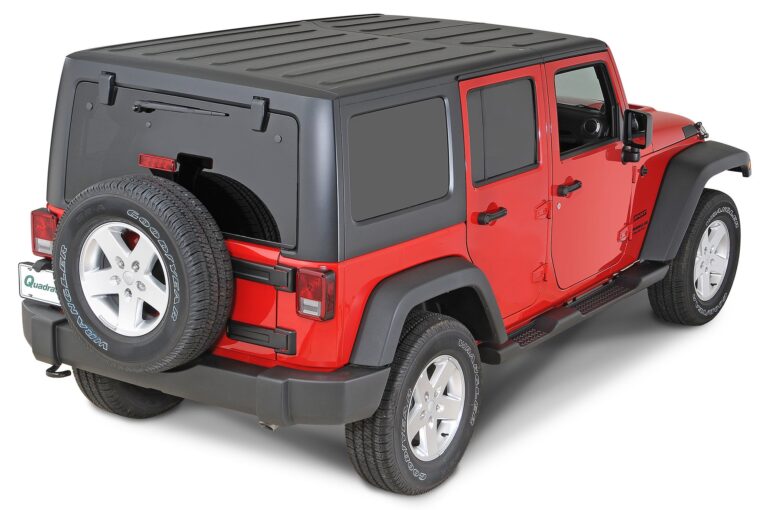How Much Weight Can A 2013 Jeep Wrangler Unlimited Tow? Unlocking Your JK’s Hauling Potential
How Much Weight Can A 2013 Jeep Wrangler Unlimited Tow? Unlocking Your JK’s Hauling Potential jeeps.truckstrend.com
The 2013 Jeep Wrangler Unlimited, with its iconic design, legendary off-road prowess, and the practicality of four doors, embodies adventure and versatility. Owners often dream of weekend getaways, hauling recreational toys, or even light utility tasks. But a crucial question frequently arises: how much weight can this rugged vehicle truly tow? Understanding your 2013 Jeep Wrangler Unlimited’s towing capacity isn’t just about knowing a number; it’s about ensuring safety, preserving your vehicle’s longevity, and complying with legal requirements.
This comprehensive guide will delve deep into the towing capabilities of the 2013 Jeep Wrangler Unlimited (JK generation). We’ll cover everything from its official maximum capacity and the factors influencing it, to essential equipment, safe towing practices, and practical advice to help you confidently and responsibly utilize your Wrangler’s hauling potential.
How Much Weight Can A 2013 Jeep Wrangler Unlimited Tow? Unlocking Your JK’s Hauling Potential
Understanding Your 2013 Jeep Wrangler Unlimited’s Core Towing Capacity
At its heart, the 2013 Jeep Wrangler Unlimited is designed to be a capable off-roader first, but it also possesses a respectable towing capacity for its class. For all 2013 Jeep Wrangler Unlimited (4-door) models, the maximum rated towing capacity is 3,500 pounds (approximately 1,588 kilograms).
This capacity is a significant distinction from the 2-door Wrangler models of the same year, which are typically rated to tow only 2,000 pounds. The Unlimited’s longer wheelbase and heavier curb weight contribute to its enhanced stability and higher towing rating.
This 3,500-pound limit is determined by several engineering factors, including:
- Engine Power: The 2013 Wrangler Unlimited is equipped with the robust 3.6-liter Pentastar V6 engine, producing 285 horsepower and 260 lb-ft of torque. This engine provides ample power for pulling loads within its stated limits.
- Transmission: Both the available 5-speed automatic and 6-speed manual transmissions are designed to handle the stresses of towing within the specified capacity. The automatic often provides a smoother towing experience.
- Chassis and Suspension: The Unlimited’s frame, suspension components, and braking system are all engineered to manage the added weight and forces associated with towing up to 3,500 pounds safely.

It’s crucial to understand that this 3,500-pound figure is the maximum a properly equipped Wrangler Unlimited can tow under ideal conditions. Various factors can reduce this effective capacity, as we will explore in the following sections.
Key Factors Influencing Towing Performance and Safety
Towing safely and efficiently involves more than just knowing your maximum towing capacity. Several interconnected weight ratings and vehicle specifications play a critical role:
- Gross Vehicle Weight Rating (GVWR): This is the maximum permissible total weight of your fully loaded Jeep Wrangler Unlimited, including the vehicle itself, all passengers, cargo, and any accessories. Exceeding the GVWR compromises safety and vehicle integrity.
- Gross Combined Weight Rating (GCWR): This is the maximum permissible total weight of your fully loaded Jeep and the fully loaded trailer combined. For the 2013 Wrangler Unlimited, this is approximately 8,700 pounds (vehicle GVWR + 3,500 lbs towing capacity). This is perhaps the most critical number to monitor, as it accounts for everything moving down the road.
- Tongue Weight (TW): This is the downward force exerted by the trailer’s tongue on the hitch ball of your Jeep. Proper tongue weight is vital for stable towing. It should ideally be 10-15% of the total loaded trailer weight. Too little tongue weight can cause dangerous trailer sway, while too much can overload the rear axle of your Jeep, affecting steering and braking. For a 3,500-pound trailer, your tongue weight should be between 350 and 525 pounds.
- Payload Capacity: This refers to the maximum amount of weight your Jeep can carry inside it, including driver, passengers, and all cargo. It’s often overlooked when towing. Remember, any weight added to your Jeep (people, gear, roof rack cargo) directly reduces the available weight you can tow, as you must remain within the GCWR and GVWR. Your payload capacity is typically listed on a sticker inside your driver’s side door jamb.
- Axle Ratios: While the 3.6L Pentastar V6 is standard, the 2013 Wrangler Unlimited was available with different axle ratios (e.g., 3.21, 3.73, 4.10 for Rubicon models). Higher numerical ratios (like 3.73 or 4.10) provide more mechanical advantage for pulling, improving towing performance, especially from a standstill or on inclines. Lower ratios (like 3.21) prioritize fuel economy. For consistent towing, a 3.73 or higher ratio is generally preferred.
- Tires: Ensure your tires are properly inflated and have an adequate load rating for towing. "P-metric" passenger car tires may not be sufficient for heavier loads; "LT-metric" light truck tires offer higher load capacities.


Essential Towing Equipment and Upgrades
To safely and effectively tow with your 2013 Jeep Wrangler Unlimited, specific equipment is either necessary or highly recommended:
-
Factory Tow Package: If your 2013 Wrangler Unlimited came from the factory with a tow package, it typically included:
- A Class III hitch receiver (2-inch opening).
- A 4-pin and/or 7-pin wiring harness for trailer lights.
- Heavy-duty engine cooling (often an upgraded radiator and/or fan).
This package ensures your Jeep is ready for its rated capacity.
-
Aftermarket Hitch Receiver: If your Wrangler didn’t come with the factory package, you’ll need to install a Class III (or higher) aftermarket hitch receiver. Ensure it’s properly bolted to the frame.
-
Wiring Harness: A functional wiring harness is crucial for trailer lights (tail, brake, turn signals). A 4-pin connector is common for smaller trailers, but a 7-pin connector is required for trailers with electric brakes and/or auxiliary power.
-
Trailer Brake Controller: For trailers over approximately 1,000-1,500 pounds (and legally required in many places for trailers over a certain weight, often 2,000 lbs), a trailer with independent electric brakes is essential. A trailer brake controller, mounted in your Jeep’s cabin, allows you to activate these brakes, significantly improving stopping power and control. This is a critical safety item and is not included in the factory tow package.
-
Weight Distribution Hitch (WDH): While not always necessary for loads at the lower end of the 3,500-pound capacity, a WDH can greatly improve stability and handling, especially for trailers with significant tongue weight or when approaching the maximum capacity. It helps distribute the trailer’s tongue weight more evenly across all axles of both the Jeep and the trailer, reducing rear-end sag and improving steering and braking.
-
Sway Control: This can be integrated into a WDH or an add-on friction bar. Sway control systems help dampen side-to-side motion of the trailer, preventing dangerous "fishtailing."
-
Transmission Cooler: While often part of the factory tow package, an auxiliary transmission cooler is a wise investment if you plan to tow frequently or in hot climates. It helps prevent transmission fluid from overheating, which is a leading cause of transmission failure under load.
Safe Towing Practices: A Step-by-Step Guide
Proper technique and vigilance are paramount for safe towing:
-
Pre-Trip Inspection:
- Tires: Check tire pressure on both the Jeep and the trailer. Ensure they are inflated to the manufacturer’s recommended pressures for towing.
- Lights: Test all trailer lights (running, brake, turn signals) and your Jeep’s lights.
- Fluids: Check engine oil, transmission fluid, coolant, and brake fluid levels in your Jeep.
- Hitch Connection: Ensure the hitch ball is properly secured, the coupler is latched, the safety pin is in place, and safety chains are crossed and attached.
- Breakaway Cable: If your trailer has electric brakes, ensure the breakaway cable is connected to your Jeep’s frame (not the hitch itself).
- Cargo: Secure all cargo on and in the trailer to prevent shifting.
-
Loading the Trailer: Distribute the trailer’s weight correctly. Aim for 60% of the cargo weight to be in the front half of the trailer and 40% in the rear. This helps achieve the ideal 10-15% tongue weight.
-
Driving Techniques:
- Slower Speeds: Reduce your speed, especially on highways, in windy conditions, or on challenging terrain. Lower speeds provide more reaction time and reduce sway.
- Increased Following Distance: Double or triple your normal following distance to allow for longer braking distances.
- Wider Turns: Account for the trailer’s path, taking wider turns to avoid clipping curbs or other obstacles.
- Anticipate Stops: Begin braking earlier and more gradually. Use your trailer brake controller to apply trailer brakes independently if needed for gentle slowing.
- Downhill Braking: Shift your Jeep into a lower gear (manual or automatic’s "L" or "2" settings) to use engine braking and reduce reliance on your service brakes, preventing overheating.
- Check Mirrors Frequently: Be aware of your surroundings and the trailer’s behavior.
-
Parking and Backing Up: Find a large, open area to practice backing up with your trailer. Remember that the trailer turns in the opposite direction of your steering wheel. Use a spotter if possible.
-
Post-Trip Checks: After each tow, inspect your hitch, wiring, tires, and trailer components for any signs of wear, damage, or loose connections.
What Can a 2013 Jeep Wrangler Unlimited Tow? Practical Examples
With its 3,500-pound capacity, the 2013 Jeep Wrangler Unlimited is well-suited for towing a variety of common items:
- Small Utility Trailers: For hauling garden waste, moving furniture, or assisting with home projects.
- Small Pop-Up Campers: Many lightweight pop-up campers fall within this weight range. Always check the camper’s Gross Vehicle Weight Rating (GVWR) and dry weight.
- Single Jet Skis or Small Fishing Boats: On a single-axle trailer, a jet ski or a very small aluminum boat is usually well within limits.
- ATVs or Dirt Bikes: A small open trailer carrying one or two ATVs or dirt bikes is typically manageable.
- Motorcycles: A single motorcycle on a dedicated trailer.
What it cannot tow: Most conventional travel trailers, car haulers (with another vehicle on them), large boats, or horse trailers will exceed the 3,500-pound limit. Always verify the actual loaded weight of what you intend to tow.
Challenges and Solutions
Towing, while beneficial, introduces certain challenges that Wrangler Unlimited owners should be aware of:
- Reduced Fuel Economy: Expect a significant drop in miles per gallon when towing, especially at highway speeds.
- Increased Wear and Tear: Components like brakes, transmission, and engine will work harder. Regular maintenance, especially fluid changes, becomes even more critical.
- Stability Issues (Sway): Improper tongue weight, crosswinds, or passing large trucks can induce trailer sway. Solutions include proper loading, using a WDH with sway control, and slowing down.
- Overheating: Prolonged towing, especially uphill or in hot weather, can cause engine or transmission overheating. The heavy-duty cooling system in the factory tow package helps, but monitoring your gauges and taking breaks if temperatures rise is wise. An aftermarket transmission cooler can provide additional peace of mind.
- Legal Considerations: Towing laws vary by state and province regarding trailer brakes, speed limits, and licensing requirements. Always check local regulations.
Practical Advice and Actionable Insights
- Know Your Weights: Never guess. Use a public scale (e.g., at truck stops or moving companies) to weigh your loaded trailer and your combined rig.
- Prioritize Safety Gear: Don’t skimp on essential equipment like a good brake controller, proper hitch, and safety chains.
- Practice Makes Perfect: If you’re new to towing, practice in a low-traffic area to get a feel for how your Wrangler handles with a trailer attached.
- Maintain Your Vehicle: Regular oil changes, transmission fluid flushes, brake inspections, and tire rotations are even more critical when you tow.
- Don’t Overload: Exceeding your Jeep’s capacity is not only dangerous but can also void warranties and lead to costly repairs.
Towing Specifications at a Glance: 2013 Jeep Wrangler Unlimited
For quick reference, here’s a table summarizing the key towing specifications for your 2013 Jeep Wrangler Unlimited:
| Feature / Specification | Value (2013 Jeep Wrangler Unlimited) | Notes |
|---|---|---|
| Maximum Towing Capacity | 3,500 lbs (1,588 kg) | Applies to 4-door Unlimited models; requires proper equipment. |
| Engine | 3.6L Pentastar V6 | Standard across all 2013 Wrangler models. |
| Horsepower | 285 hp @ 6,400 rpm | Provides sufficient power for rated towing. |
| Torque | 260 lb-ft @ 4,800 rpm | Aids in pulling power from a standstill and on inclines. |
| Transmission Options | 5-speed Automatic (W5A580) / 6-speed Manual (NSG370) | Automatic transmission often preferred for towing due to smoother power delivery and control. |
| Gross Vehicle Weight Rating (GVWR) | Varies by trim/configuration (e.g., ~5,500 lbs) | Maximum weight of the loaded vehicle itself (including passengers, cargo, accessories). |
| Gross Combined Weight Rating (GCWR) | Approximately 8,700 lbs | Maximum combined weight of the fully loaded vehicle and its attached loaded trailer. |
| Maximum Tongue Weight | 350 lbs (10-15% of max tow capacity) | Crucial for stability; aim for 10-15% of the loaded trailer weight. |
| Standard Rear Axle Ratio | 3.21, 3.73 (optional), 4.10 (Rubicon) | Higher numerical ratios (e.g., 3.73, 4.10) provide better towing performance. |
| Factory Tow Package Includes | Class III Hitch Receiver, 4-Pin/7-Pin Wiring, Heavy-Duty Engine Cooling | Highly recommended for safe and optimal towing; ensures vehicle is prepped for the load. |
| Trailer Brake Controller Required? | Recommended for trailers over 1,000-1,500 lbs; legally required for many jurisdictions. | Not part of the factory tow package; aftermarket installation required for electric trailer brakes. |
Frequently Asked Questions (FAQ)
Q: Can a 2-door 2013 Wrangler tow as much as an Unlimited?
A: No. The 2-door 2013 Jeep Wrangler typically has a maximum towing capacity of 2,000 pounds, whereas the 4-door Unlimited model is rated for 3,500 pounds. The longer wheelbase of the Unlimited provides greater stability for heavier loads.
Q: Do I need a special license to tow with my Wrangler?
A: In most U.S. states and Canadian provinces, a standard driver’s license is sufficient for towing trailers within the Wrangler Unlimited’s 3,500-pound capacity for recreational purposes. However, laws vary, especially if towing for commercial purposes or with much heavier trailers (which would exceed the Wrangler’s capacity anyway). Always check local Department of Motor Vehicles (DMV) or equivalent regulations.
Q: What’s the most common mistake people make when towing?
A: The most common mistake is underestimating the actual loaded weight of the trailer, often relying only on "dry weight." Another frequent error is improper tongue weight, leading to dangerous trailer sway.
Q: Can I add a tow hitch if my Wrangler didn’t come with a factory package?
A: Yes, you can install an aftermarket Class III hitch receiver and the appropriate wiring harness. Ensure it’s rated for your vehicle’s capacity and installed correctly. Consider adding a transmission cooler if you plan to tow regularly.
Q: How do I calculate my trailer’s tongue weight?
A: You can use a commercial tongue weight scale, or a bathroom scale method for lighter trailers (place the trailer coupler on the scale with a piece of wood for height, ensuring the scale is level). For larger trailers, public scales or specific tongue weight scales are necessary. Aim for 10-15% of the total loaded trailer weight.
Q: What if my trailer weighs more than 3,500 lbs?
A: Do not attempt to tow a trailer heavier than 3,500 pounds with your 2013 Jeep Wrangler Unlimited. Exceeding the maximum towing capacity is extremely dangerous, can lead to loss of control, severe damage to your vehicle, and potentially costly accidents. If your trailer is heavier, you need a more capable tow vehicle.
Q: Does lifting my Jeep affect towing capacity?
A: Yes, lifting your Jeep can negatively impact its effective towing capacity and stability. A lifted vehicle changes the center of gravity, can alter suspension geometry, and may reduce the effectiveness of weight distribution hitches. It’s generally advised to keep your suspension stock or use a mild lift designed for towing if you plan to tow frequently.
Conclusion
The 2013 Jeep Wrangler Unlimited is a remarkably versatile vehicle, and its 3,500-pound towing capacity significantly enhances its utility. While it won’t haul a large fifth-wheel, it’s perfectly capable of managing a wide range of recreational gear and light utility trailers, making it an excellent companion for many adventures.
However, capability comes with responsibility. Understanding the nuances of towing capacity, investing in the right equipment, adhering to safe towing practices, and consistently monitoring your setup are paramount. By doing so, you can confidently and safely unlock your 2013 Jeep Wrangler Unlimited’s full hauling potential, ensuring countless safe and enjoyable journeys on and off the beaten path.





